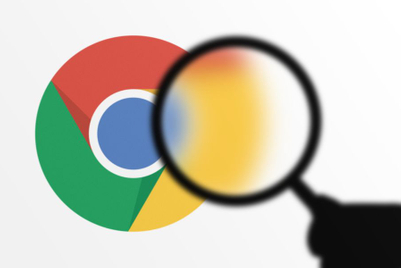
Update: On 28 August Google officially announced that its Chrome browser will stop autoplaying Flash ads as of 1 September.
The days of the Flash ad are numbered, despite the head-in-the-sand approach that some have adopted.
This is due to several changes. However the most important one for advertisers will be the Chrome Power Saver feature. In September, Chrome will begin pausing all non-essential Flash assets, including a vast majority of all Flash ads. Instead of the interactive, engaging brand experience that advertisers have invested their money in, Flash-based ads will simply turn into a greyed-out static image with a large 'play' button over the top.

An example of a Flash-based ad defaulting to a static image and 'play' button
And let’s not forget the security issues that caused Firefox to completely disable Flash for a while in early July. Some of these security exploits would allow hackers full access to a viewer’s computer, enabling them to install malware and ransomware capable of completely locking the user out of their own system.
The Flash standard, which became embedded in the digital web at the multimedia dawn of the mid-1990s will soon be consigned to history. It’s another piece of last-century technology that is finally being retired, and the digital advertising industry will benefit, as true creativity and consumer interactivity will finally become the bedrock of digital campaigns.
In the early days of the web, before the explosion of video, consumers had to install a number of plugins, such as Flash, QuickTime, Windows Media Player, and RealPlayer, in order to consume certain media files. And with all those plugins needing constant updates, it was even more annoying than it sounds. That technology looks primitive compared with what is coming next. The imminent arrival of HTML5 as the new universal ad standard will eliminate that archaic approach, as video is embedded in the code. The goal is a consistent, engaging user experience across all browsers and devices.
But, first, the acceptance of this transition has to happen in digital shops across Asia. There is no turning back, and this is worth emphasising, because we are all going to have to face this new reality. In the near future, it will be pointless to serve Flash ads to publisher sites because many browsers will no longer support this format.
The switchover has been in the works for a while. In 2011, Adobe abandoned Flash Player for mobile devices (after Steve Jobs penned a famous takedown and refused to allow Flash in iOS). At the start of 2015 YouTube moved to the HTML5 standard, and Firefox has made the move as well. Several large publishers are discussing dropping Flash entirely, with Alex Stamos, Facebook’s security chief, taking the lead in calling for Adobe to give an “end-of-life” date for Flash.
The upside for advertisers and agencies is that many tools are available that make it easy to transition to HTML5. The format allows them to be significantly more creative and design campaigns that drive much higher interaction rates.
We’ve been following this shift for a while and conducted some in-depth research on mobile formats, adoption and waste. According to the Sizmek Mobile Index report, 5.35 billion rich media ad impressions were wasted on mobile devices in the first quarter of 2015 alone. That is a big problem for advertisers seeking to get the best possible return from their digital investments.
Ad-tech providers have seen the death of Flash coming, and have already built new creative toolsets to ensure advertisers can create and deliver highly engaging interactive ads across screens and devices. The audio and video elements of HTML5 have been fine-tuned and enhanced over a number of years, so it’s not a shiny new toy.
In the biggest advertising market in the world, the US, we have noticed some resistance from creative and digital designers who have used Flash for the past 20 years. That's understandable. But by adopting a more robust standard and making HTML5 their technology of choice for digital ads, agencies and publishers can make their lives much easier and avoid having to answer all of the questions that will be raised by their Flash-based campaigns in the coming months.
Jordan Khoo is vice president, Asia-Pacific, at Sizmek



.jpg&h=334&w=500&q=100&v=20250320&c=1)





+(900+x+600+px)+(3).png&h=334&w=500&q=100&v=20250320&c=1)
.jpg&h=334&w=500&q=100&v=20250320&c=1)

.jpg&h=268&w=401&q=100&v=20250320&c=1)

.jpg&h=268&w=401&q=100&v=20250320&c=1)
.jpg&h=268&w=401&q=100&v=20250320&c=1)


.jpg&h=268&w=401&q=100&v=20250320&c=1)
.jpg&h=268&w=401&q=100&v=20250320&c=1)